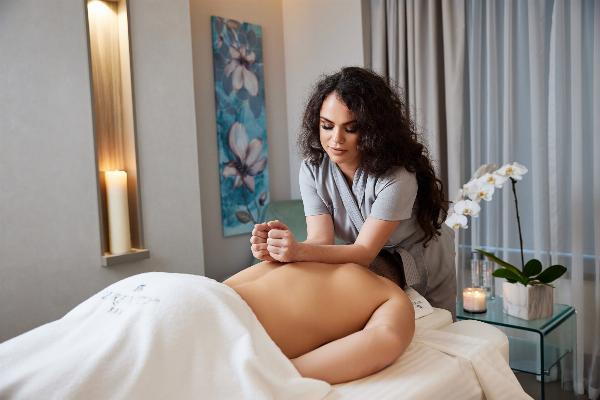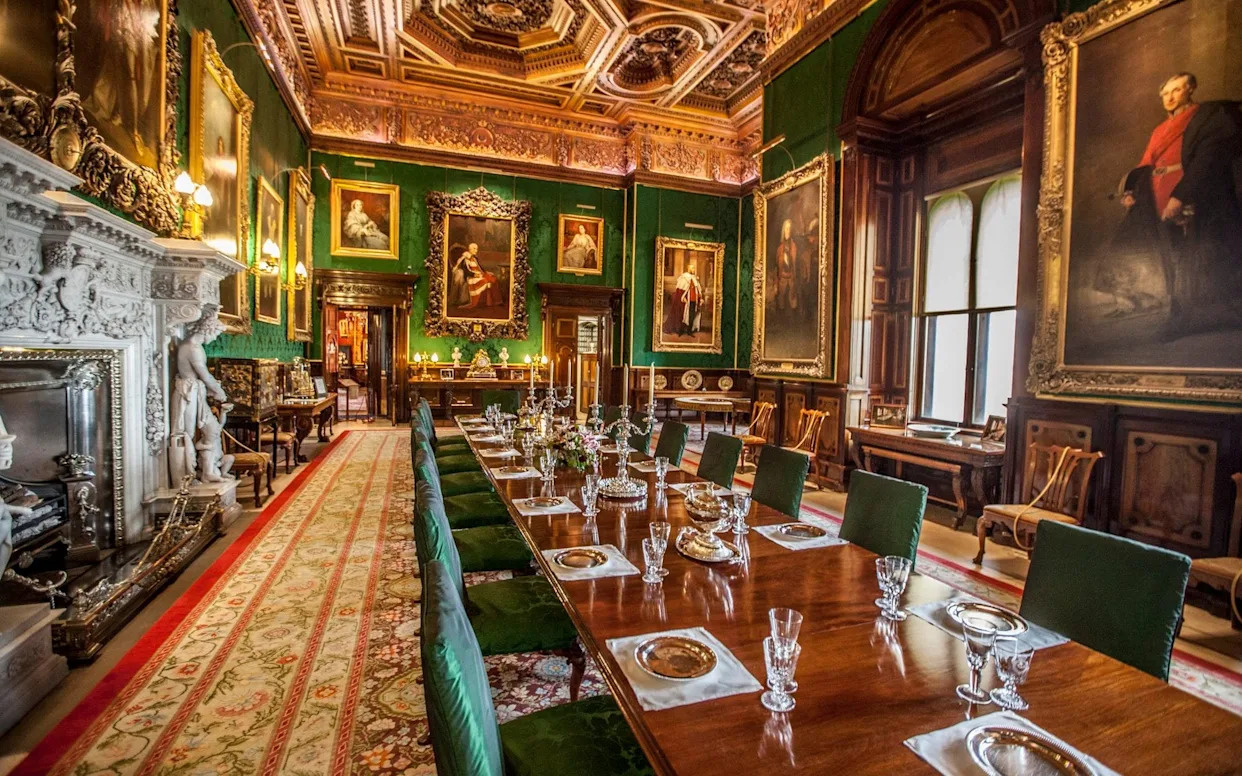
The joy of exploring Northumberland is that it’s big, meaning that the variety of things to do is tantalising. There is a 70-mile coastline with near-empty beaches; castles by the bucket-load (more than any other English county); grand houses and gardens; an interior of lonely moorland and quiet valleys; England’s largest forest and man-made lake; and, of course, the unfeasibly ambitious frontier of the Roman Empire: Hadrian’s Wall. Really, there’s too much choice. True, it lacks bright cities and shopping malls, nightclubs and stadiums, but village shops, welcoming pubs, cacophonous wildlife and strikingly dark night skies are abundant.
All our recommendations below have been hand selected and tested by our resident destination expert to help you discover the best things to do in Northumberland. Find out more below, or for more Northumberland inspiration, see our guides to the region’s best hotels, restaurants, pubs and beaches.
Find things to do by type:
Best for families
Best free things to do
Best for adventure
Best for history
Best for lazy days out
Best for families
Alnwick Castle
Dragons, battlements and broomsticks
No need to be a history buff to enjoy the Duke of Northumberland’s home, the second-largest inhabited castle in England. There are battlements to stride, medieval workshops to explore (try your hand at soap-making or tile-making), dragons to find (head to Dragons Quest, if you dare) and the highly skilled art of broomstick-flying to master (the castle featured as Hogwarts in a Harry Potter film). Of course, there are glittering state rooms to marvel at with treasures including Canalettos, Titian paintings, Meissen porcelain and Baroque furniture.
AdvertisementAdvertisement#«R8bekkr8lb2m7nfddbH1» iframe AdvertisementAdvertisement#«Rgbekkr8lb2m7nfddbH1» iframeInsider tip: Check the daily What’s On board for free guided tours, including Harry Potter filming locations.Website: alnwickcastle.comPrice: ££
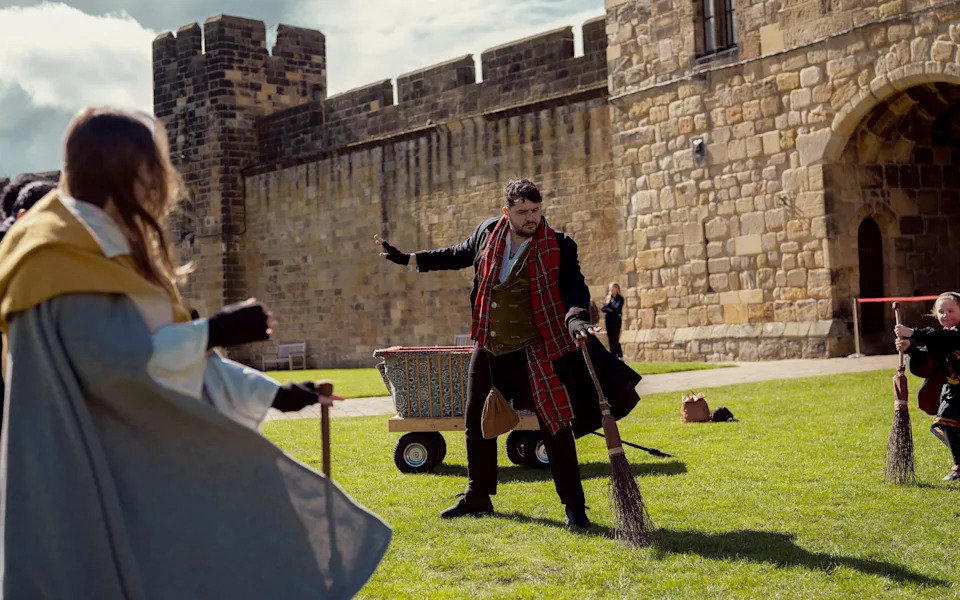 Learn to fly a broomstick in Alnwick’s Outer Bailey – backdrop of the first flying lesson in the Harry Potter film series
Learn to fly a broomstick in Alnwick’s Outer Bailey – backdrop of the first flying lesson in the Harry Potter film seriesFord and Etal Estates
A village out of time
It sounds like a fictional country village: water-powered cornmill, thatched pub, heavy horses, steam railway, grand hall, ruined castle and a village green. But that’s pretty much what you have at these two, neat-as-a-pin estate villages – except they’re also lived in. Take a ride on the miniature railway and hop off at the 18th-century mill to watch the miller at work; get up close to magnificent heavy horses; explore a ruined castle; marvel at Pre-Raphaelite murals in the Victorian school; and enjoy a pint at the thatched Black Bull or Cheviot Brewery tap bar.
Insider tip: Take a walk around nearby Ford Moss Nature Reserve, once a coal mine, and there’s a good chance of spotting buzzards, kestrels, woodcock and snipe.Website: ford-and-etal.co.ukPrice: Free or £
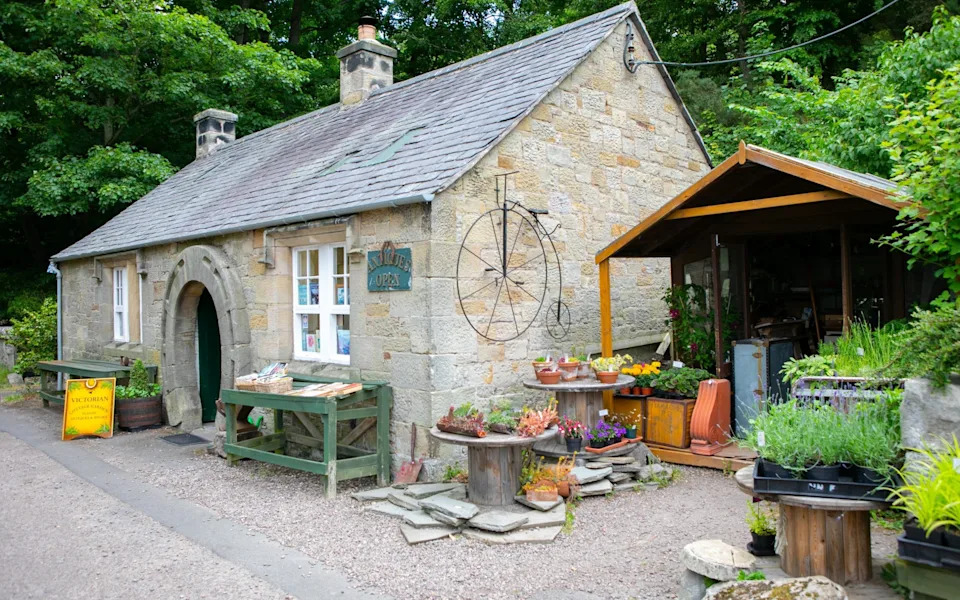 Step back in time at the Ford and Etal Estates - Lloyd Smith
Step back in time at the Ford and Etal Estates - Lloyd SmithAlnwick Garden
A playground of plants
You don’t have to be a green-fingered guru to enjoy this garden. You can wander from the rose garden and the pleached crab-apple trees to the bamboo labyrinth without knowing a single Latin plant name. Conceived by the Duchess of Northumberland as a contemporary garden on the site of a historic walled garden, it’s as much playground as gardener’s delight, from its fountain-dotted cascade and water-feature sculptures (where you’re encouraged to get wet) to its designer ornamental garden. Be careful not to touch in the Poison Garden, where every plant is a killer.
AdvertisementAdvertisement#«R8mekkr8lb2m7nfddbH1» iframe AdvertisementAdvertisement#«Rgmekkr8lb2m7nfddbH1» iframeInsider tip: Summer is heavenly for the perfume-packed rose garden while spring promises 300 cherry trees shimmering with snowy-white blossom. Website: alnwickgarden.comPrice: ££
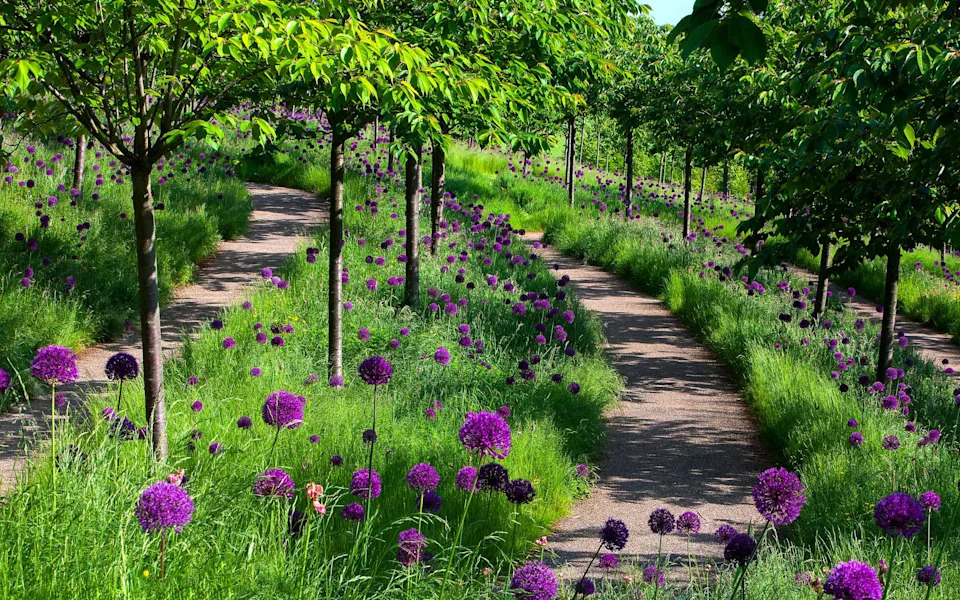 Alnwick’s Gardens are as expansive as they are impressive, with a huge treehouse restaurant for good measure
Alnwick’s Gardens are as expansive as they are impressive, with a huge treehouse restaurant for good measureBamburgh Castle
Lord it up
If you like your castle dark, imperious and forbidding, this is the one. Rising 145 feet above the sea, the Norman castle was impregnable until cannon fire came along in the Wars of the Roses. Restored by Victorian industrialist Lord Armstrong, it’s still owned by his family. Explore the state rooms, Great Hall, armoury, kitchen, dungeon and massive Keep, then stand on the battlements and gaze at the sweeping coastal views. Regular events include re-enactments and treasure hunts, plus, for 2025, The Last Kingdom television drama props and costumes exhibition.
Insider tip: If you need an energy boost while exploring, the café’s home-baked scones are quite possibly the best in Northumberland: large, fruity and extremely satisfying.Website: bamburghcastle.comPrice: ££
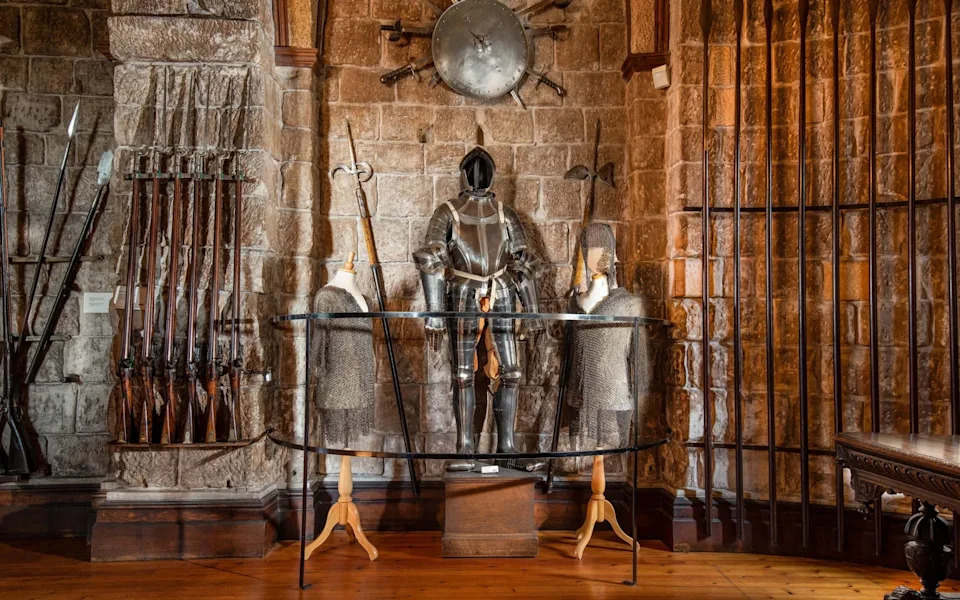 Spend the day pretending to be a Norman lord at Bamburgh Castle, or just climb the battlements and admire the views - TRACEY BLOXHAM/Inside Story Photography
Spend the day pretending to be a Norman lord at Bamburgh Castle, or just climb the battlements and admire the views - TRACEY BLOXHAM/Inside Story PhotographyKielder Observatory
Look to the stars
You can lose yourself staring at the night skies around here: deep, inky, and spectacularly sparkling on clear nights. Kielder’s skies are Europe’s largest Gold-Tier International Dark Sky Park. On a hillside, above the lake, the futuristic-looking Kielder Observatory runs a year-round programme of night-time events ranging from a romp through the origins of the universe and the magic of the Northern Lights to what’s happening in galaxies beyond ours. Tutored star-gazing from the decking and through their large-aperture telescopes are always included, weather permitting.
AdvertisementAdvertisement#«R91ekkr8lb2m7nfddbH1» iframe AdvertisementAdvertisement#«Rh1ekkr8lb2m7nfddbH1» iframeInsider tip: Wear thermals under twice as many layers as you think you’ll need; the nights can be very chilly. On the plus side, there’s free hot chocolate at the end.Website: kielderobservatory.orgPrice: ££–£££
 Lose yourself gazing up at the cosmos from the middle of Europe’s largest Gold-Tier International Dark Sky Park
Lose yourself gazing up at the cosmos from the middle of Europe’s largest Gold-Tier International Dark Sky ParkBack to index
Best free things to do
Chain Bridge Honey Farm
A naturally sweet spot
Sitting 300 yards from Scotland, at Horncliffe, this farm’s bees have no regional allegiance; they roam freely from over 1,500 hives, collecting pollen from either side of the border. Run by second- and third-generation Robsons, its spick-and-span exhibition rooms cover everything about beekeeping and honey production including a glass-sided observation hive to watch busy little bees carrying pollen on their hind legs. Products range from candles to lip balms, furniture polish to soaps, as well as honeys and mustards. There’s even a café in a double-decker bus.
Insider tip: Walk five minutes down the road to the 1820 Union Bridge (the world’s longest wrought-iron suspension bridge when it opened) where you can stand with one foot in each country. Website: chainbridgehoney.com
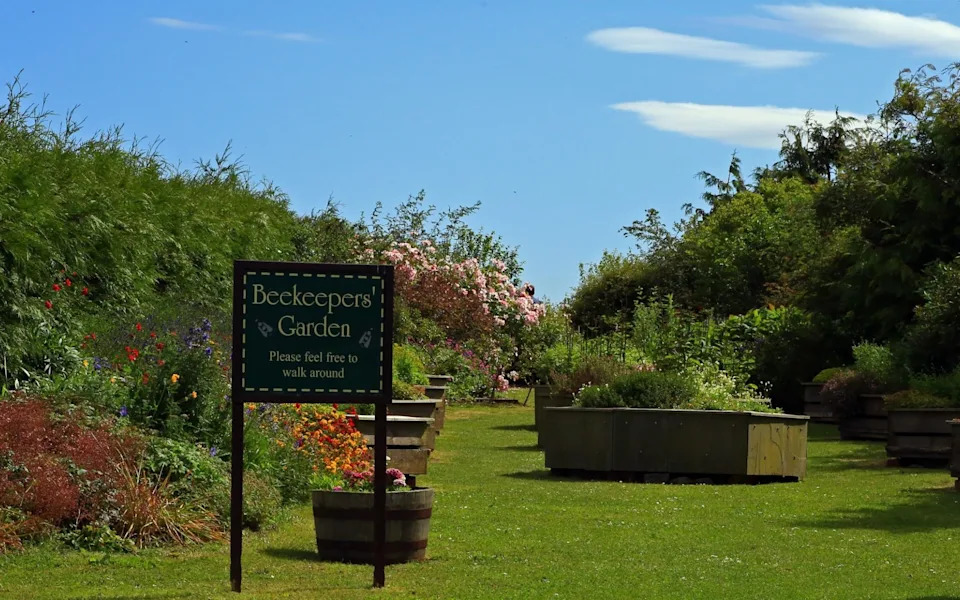 Chain Bridge Honey Farm has more than 1,500 hives alongside their exhibition rooms covering everything from beekeeping to honey production
Chain Bridge Honey Farm has more than 1,500 hives alongside their exhibition rooms covering everything from beekeeping to honey productionLowry Trail
Through the eyes of an artist
It’s not surprising that the Salford-born artist L.S. Lowry chose the border town of Berwick-upon-Tweed as his favourite holiday destination. A singular man for a tough and singular place. Tugged between England and Scotland 13 times, Berwick finally became England’s most northerly town in 1482. Follow the Lowry Trail around the town, which includes a walk on the gloriously intact Elizabethan walls, to stand in the places he painted; replicas of his work let you compare his scenes with those of today.
AdvertisementAdvertisement#«R9eekkr8lb2m7nfddbH1» iframe AdvertisementAdvertisement#«Rheekkr8lb2m7nfddbH1» iframeInsider tip: When following the trail to the lighthouse on the northern side of the Tweed estuary, keep an eye out for gannets, terns, seals and dolphins.Website: visitberwick.com
 Uncover the lasting impact of L.S. Lowry on his favourite annual holiday destination, Berwick-upon-Tweed - Mirrorpix
Uncover the lasting impact of L.S. Lowry on his favourite annual holiday destination, Berwick-upon-Tweed - MirrorpixTake a walk
Explore the wild on foot
There are almost too many walks to choose from in Northumberland. Serious options include the 62-mile long Northumberland Coast Path, from Cresswell to Berwick-upon-Tweed, or Hadrian’s Wall Path, at 84 miles. For more do-able – and family-friendly – options, head to the sands, such as Embleton to Dunstanburgh Castle, or opt for the six-mile circular between Bamburgh and Seahouses: beach one-way, fields the other. Inland, Linhope Spout waterfall is a pretty walk in the Breamish valley, while Yeavering Bell, near Kirknewton in the Cheviot Hills, offers views into Scotland.
Insider tip: For real remoteness, College Valley, south of Hethpool in the Cheviot Hills, is a wild beauty. Only 12 car day-visitors are allowed. Alternatively, you can park at Hethpool and walk in.Website: visitnorthumberland.com; northumberlandnationalpark.org.uk
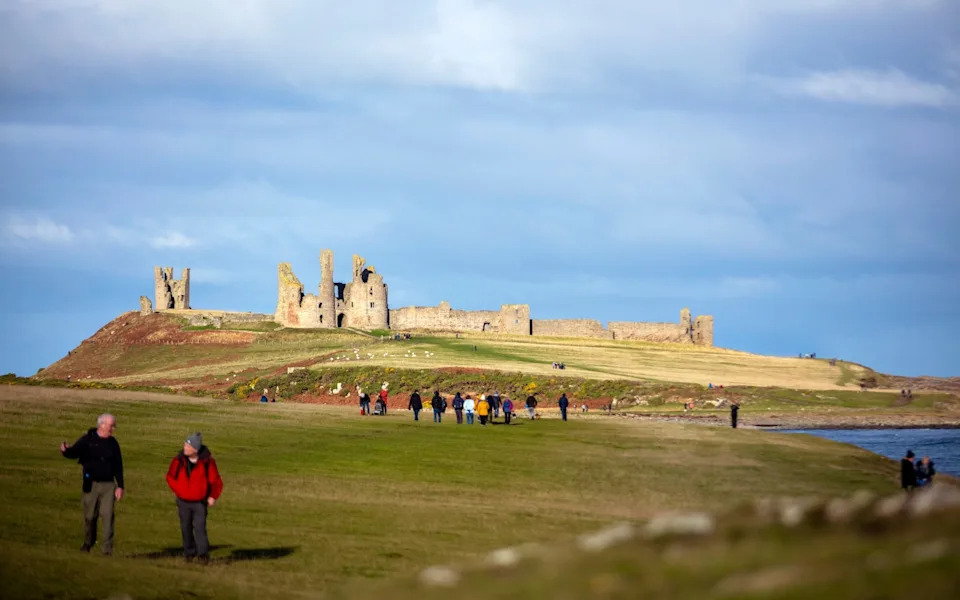 For a gentle outing on foot, walk the gentle slopes surrounding the striking ruins of Dunstanburgh Castle - Kevin Gibson Photography
For a gentle outing on foot, walk the gentle slopes surrounding the striking ruins of Dunstanburgh Castle - Kevin Gibson PhotographyBird-watching
Binoculars at the ready
Pick your spot, make yourself comfortable, then watch and wait; it won’t be long before you see something interesting. Around harbours such as Seahouses you might spot redshanks with their jolly orangey-red legs. On the beaches you’ll see comically skittering groups of sanderlings, red-beaked oystercatchers or white-and-black-collared ringed plovers. Rockier outcrops are good for spotting purple sandpipers or the handsome black-and-brown-feathered turnstone. Come autumn, the salt marshes and mudflats – especially around Budle Bay – fill like a rock-concert stadium with thousands of migratory wigeon, Brent geese and pink-footed geese.
AdvertisementAdvertisement#«R9pekkr8lb2m7nfddbH1» iframe AdvertisementAdvertisement#«Rhpekkr8lb2m7nfddbH1» iframeInsider tip: Window on Wild Lindisfarne, a striking stone-built shelter on Holy Island, is a good, warm place to observe birds and other wildlife.Website: nwt.org.uk
Back to index
Best for adventure
Hadrian’s Wall
A spectacular frontier
To visit all Hadrian’s Wall would be as ambitious as building the 73-mile-long frontier. Pick a couple of sites instead and mix them with a stretch of walking to get a real feel for this epic project. Housesteads is Britain’s most complete Roman fort with remains including a hospital and the giggle-inducing communal loos. The Roman Army Museum, at Magna Fort, showcases life as a Roman soldier, while a walk from Steel Rigg west on to Winshield Crags (the highest point) and Cawfields Crags offers spectacular views.
Insider tip: The only section of the wall on which people can officially walk (elsewhere, visitors must respect its protected status) is just to the west of Housesteads.Website: english-heritage.org.ukPrice: £
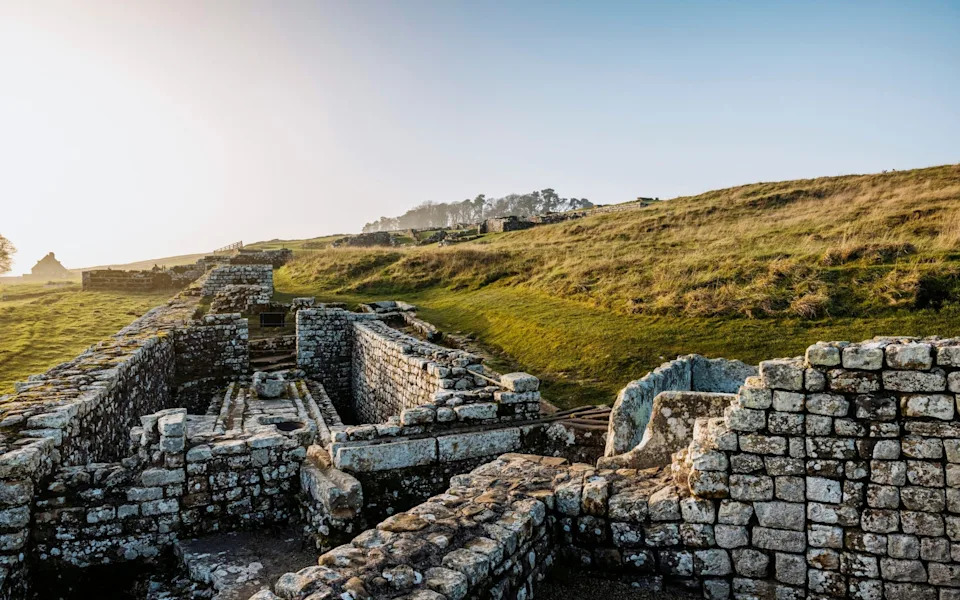 Get a feel for this gargantuan Roman construction project by picking a few particularly picturesque sections to explore - Andrew Maybury
Get a feel for this gargantuan Roman construction project by picking a few particularly picturesque sections to explore - Andrew MayburyFarne Islands boat trip
Seal-spotting and puffin performances
Join a boat trip from jolly little Seahouses, a seaside resort still with a working harbour, to the Farne Islands, home to over 3,000 Atlantic grey seals. You’re generally guaranteed a sighting, whether the whiskery mammals are snoozing on the rocks or bobbing in the water. The islands, a National Nature Reserve, are also home to huge colonies of seabirds – including puffins, terns, eider ducks and guillemots – which vary depending on the time of year.
AdvertisementAdvertisement#«Ra5ekkr8lb2m7nfddbH1» iframe AdvertisementAdvertisement#«Ri5ekkr8lb2m7nfddbH1» iframeInsider tip: Now you’ve seen the inhospitable islands, visit the Grace Darling Museum in Bamburgh to shudder at the wooden rowing boat this lighthouse-keeper’s daughter used in her daring sea rescue in these waters in 1838.Website: farne-islands.comPrice: ££
 The Farne Islands are one of the best places to spot Atlantic grey seals and puffins - Nick Upton
The Farne Islands are one of the best places to spot Atlantic grey seals and puffins - Nick UptonSea watersports
Come on in, the water’s lovely!
You might not fancy swimming – the average North Sea temperature is around 10 degrees – but you can still get your (wet-suited) watery kicks. Adventure Northumberland, based in Craster, thinks it’s fun to combine kayaking and coasteering: paddle to a rocky cliff, climb up and jump back in again. Or you can skip the kayaking bit, if you prefer. If you fancy trying stand-up paddleboarding, surfing, or kite-surfing, head to Beadnell where KA Adventure Sports will get you kitted out – and launched.
Insider tip: If you do fancy a swim, try Bamburgh beach; warm up after with a hot drink from the van beside the cricket pitch near the beach path.Website: adventurenorthumberland.co.uk; kaadventuresports.co.ukPrice: ££–£££
Kielder Forest and Water
Fun and games in the woods and water
It’s hard to imagine that the massive expanse of Kielder Water, close to the Scottish border, was once a river valley dotted with farms and cottages. Flooded in the early 1980s to create a reservoir, it’s now northern Europe’s largest man-made lake. Together with its forest – England’s largest – it’s a big outdoor playground with kayaking, canoeing, stand-up paddleboarding and biking and walking trails on offer.
AdvertisementAdvertisement#«Rafekkr8lb2m7nfddbH1» iframe AdvertisementAdvertisement#«Rifekkr8lb2m7nfddbH1» iframeInsider tip: Along the north-western shore, look for a track leading up the hillside to the igloo-shaped Skyspace. Designed by American artist James Turrell, interior searing allows you to gaze through a hole in the roof which frames the sky in striking ways.Website: visitkielder.comPrice: Free or ££-£££
Back to index
Best for history
Belsay Hall
A touch of the Mediterranean in Northumberland
Who knew empty buildings could be so interesting? The massive sandstone bulk of Belsay Hall, built in 1806 to exacting Classical lines that reflect a Greek temple (owner Sir Charles Monck had a passion for Ancient Greece) is beautiful in its austerity with high-ceilinged rooms that flow around a double-height ‘Pillar Hall’. It’s surrounded by equally striking gardens: formal terraces designed to contrast with wilder woods; an exotic quarry garden with rocky tunnels and arches (inspired by Sicilian gardens); and a semi-ruined medieval castle.
Insider tip: Come in April for the magnolias, or June to August for the radiant colours of the rhododendrons.Website: english-heritage.org.ukPrice: ££
 Belsay Hall’s beautiful classical lines reflect a Greek temple - Christopher Ison/English Heritage
Belsay Hall’s beautiful classical lines reflect a Greek temple - Christopher Ison/English HeritageVindolanda
Roman history brought to life
How high was Hadrian’s Wall? Far higher than you think, probably; an impressive 15 feet. At Vindolanda you can climb on a replica section complete with a turret (watchtower). It’s just one of the many attractions at this Roman frontier site that is the size of a village and whose origins pre-date the Emperor’s wall. Buildings revealed include underfloor-heated bathrooms and officer’s residences, while the excellent museum displays archaeological finds such as wine carafes, shoes, jewellery and astonishing wooden writing tablets, including a birthday party invitation.
AdvertisementAdvertisement#«Rarekkr8lb2m7nfddbH1» iframe AdvertisementAdvertisement#«Rirekkr8lb2m7nfddbH1» iframeInsider tip: Time it right and you can watch archaeologists at work; excavations are still ongoing. Check the website for dates of the sessions.Website: vindolanda.comPrice: ££
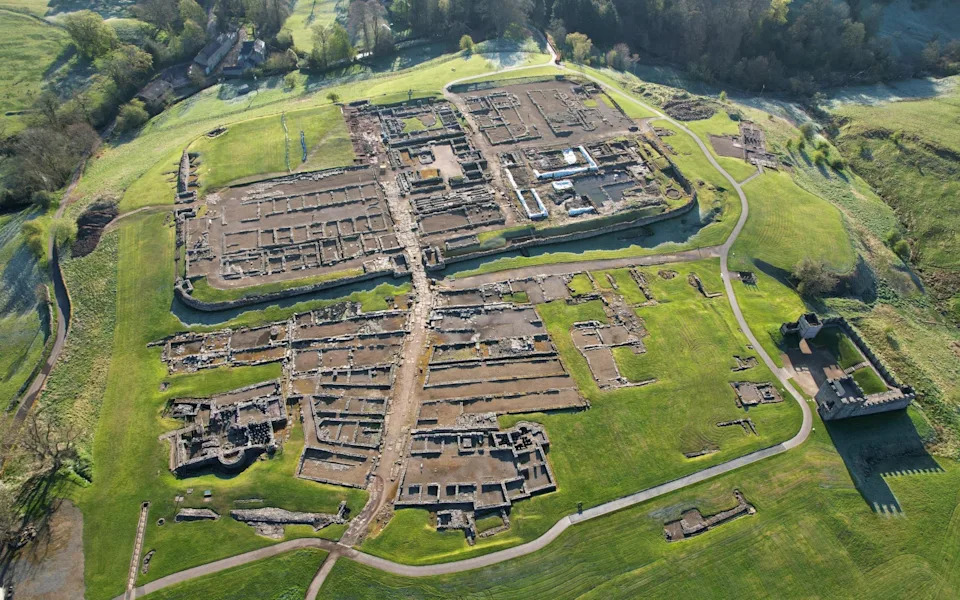 Vindolanda is an excellently preserved and presented Roman frontier site - Vindolanda Trust
Vindolanda is an excellently preserved and presented Roman frontier site - Vindolanda TrustCragside
A house of wonders
Cragside is a ridiculously big house for a couple but Lord Armstrong, the Victorian industrialist and inventor, wasn’t short of a few quid. Besides, he used his grand Arts and Crafts home, with its wood panelling, massive marble inglenook fireplace, Gillow furniture, Turkish bath and pre-Raphaelite stained glass, to showcase his inventions. Armstrong harnessed the wooded ravine’s natural features to produce hydro-electricity to light his home, a world first. Other gadgets include hydraulically-operated lifts, central heating and intercom telephones.
Insider tip: Bring walking shoes; over 40 miles of paths weave around the grounds which include formal gardens, lakes, cascades, a rock garden and pinetum.Wesbite: nationaltrust.org.ukPrice: ££
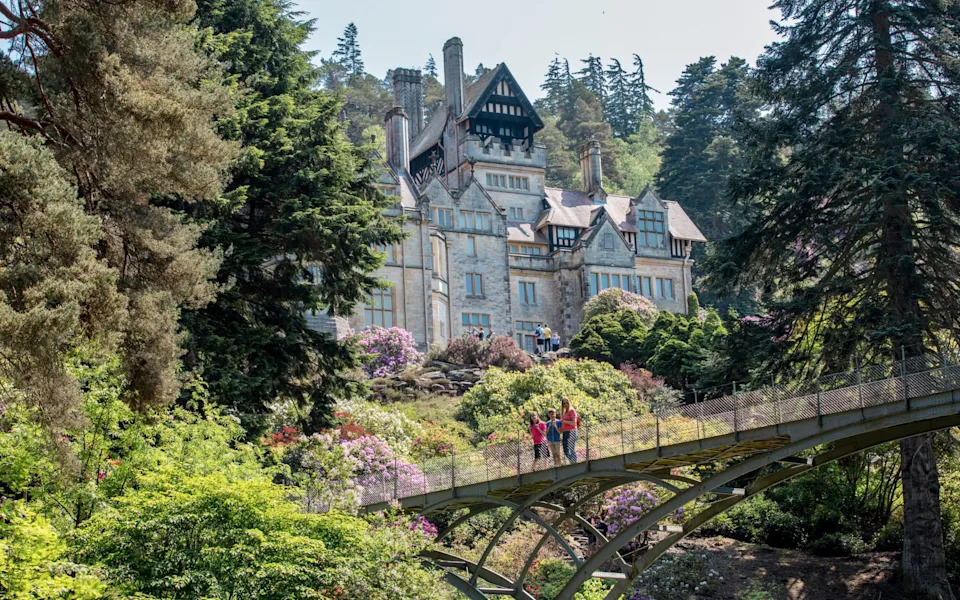 Set in a dramatic wooded ravine, Cragside is surely one of the most ambitious and impressive houses in the National Trust collection - National Trust
Set in a dramatic wooded ravine, Cragside is surely one of the most ambitious and impressive houses in the National Trust collection - National TrustAd Gefrin
Step into an Anglo-Saxon palace
Astonishingly, it was only last century, in 1949, that the summer palace of the powerful Anglo-Saxon monarchs of Northumbria was discovered. Excavations of the site near Wooler revealed a remarkably rich and cultured way of life. Now, the palace’s 70-foot-long Great Hall is cleverly recreated – helped by story-telling and music – at this light and airy museum, together with displays of the Anglo-Saxons’ skills and artistry: sewing needles, amber necklaces, parts of shields, even a beaker made from recycled Roman glass.
AdvertisementAdvertisement#«Rb6ekkr8lb2m7nfddbH1» iframe AdvertisementAdvertisement#«Rj6ekkr8lb2m7nfddbH1» iframeInsider tip: A whisky distillery adjoins the museum; book ahead for a ‘Twilight tour’ that combines a distillery visit, dinner in the museum’s restaurant and whisky-tasting. Website: adgefrin.co.ukPrice: £
Back to index
Best for lazy days out
Holy Island
Play with the tides
It tantalises from a distance; a huddle of buildings floating on the sea that rise to a pinnacle. Holy Island (or Lindisfarne), cut off twice-daily by tides (check the causeway safe crossing times), was the home of 7th-century St Cuthbert and his monastic community. Today’s ruins are of a Norman Priory while the 16th-century Lindisfarne Castle, perched on a rocky outcrop, was converted into an Edwardian home by Edwin Lutyens. You’ll also find the facsimile Lindisfarne Gospels in the Heritage Centre, Holy Island-roasted coffee in Pilgrims Coffee House, and sand dunes to wander while listening for curlews.
Insider tip: The Gertrude Jekyll-designed garden, behind the castle, is wider at the back than the front, giving the illusion of being bigger when viewed from the castle.Website: visitlindisfarne.comPrice: Free or £–££
Hexham
Stroll a friendly market town
While neighbouring Corbridge has bags of charm and chic shops, Hexham arguably has a more down-to-earth appeal. The friendly-sized Hexham Abbey offers medieval wooden panel paintings (the Dance of Death is especially gruesome) and an Anglo-Saxon crypt. Meanwhile, browsable independent shops include Mr Wolf (children’s toys), Penfax (classy pens and stationery) and Cogito Books. There’s a park to doze in, a fortnightly farmer’s market to peruse and the Queen’s Hall, an enterprising arts venue with an annual book festival, to wander. The Beaumont Hotel has a lovely pavement café while Bouchon offers rustic French food.
Insider tip: Follow the riverside path upstream from the 18th-century stone-arched bridge for a couple of miles and you’ll find the point where the North and South Tyne rivers come together.Website: visithexham.comPrice: Free
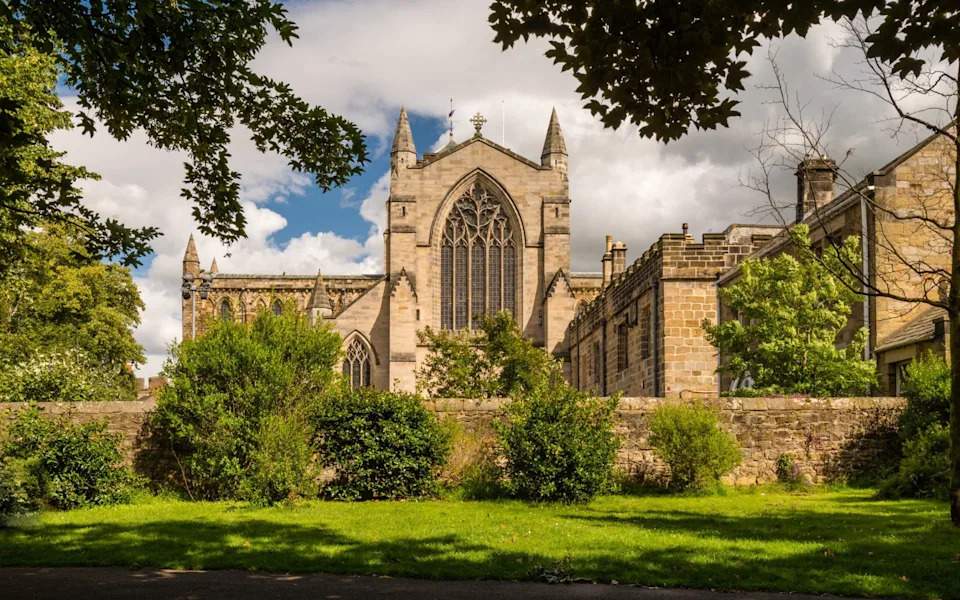 Hexham is a charming market town that’s the perfect size for a day’s wander
Hexham is a charming market town that’s the perfect size for a day’s wanderHowick Hall Gardens
A seasonal delight
Whatever time of year, something interesting will be happening in these rambling gardens and arboretum; drifts of snowdrops in February and daffodils in March as well as lilies of the valley and dark blue scillas in the woodland garden. Then it’s rhododendron time before scattered tulips bloom in the meadows. Herbaceous borders burst into colour in the summer while the arboretum – an international collection of trees, largely grown from seed – turns fiery in the autumn.
Insider tip: Make time for tea in the tea house; the Hall is the ancestral home of the Grey family, including the Victorian Prime Minister of Reform Bill fame, though he is arguably more famous for the tea that was blended in his honour by a visiting Chinese mandarin. Website: howickhallgardens.comPrice: ££
Back to index
How we choose
Every attraction and activity in this curated list has been tried and tested by our destination expert, to provide you with their insider perspective. We cover a range of budgets and styles, from world-class museums to family-friendly theme parks – to best suit every type of traveller. We update this list regularly to keep up with the latest openings and provide up to date recommendations.
About our expert
My introduction to Northumberland was pretending to be a Roman centurion on a childhood Hadrian’s Wall holiday. Now, living near the Wall, I’ve discovered far more; not least horizon-stretching views, puffins, crab sandwiches, and wild, empty beaches.
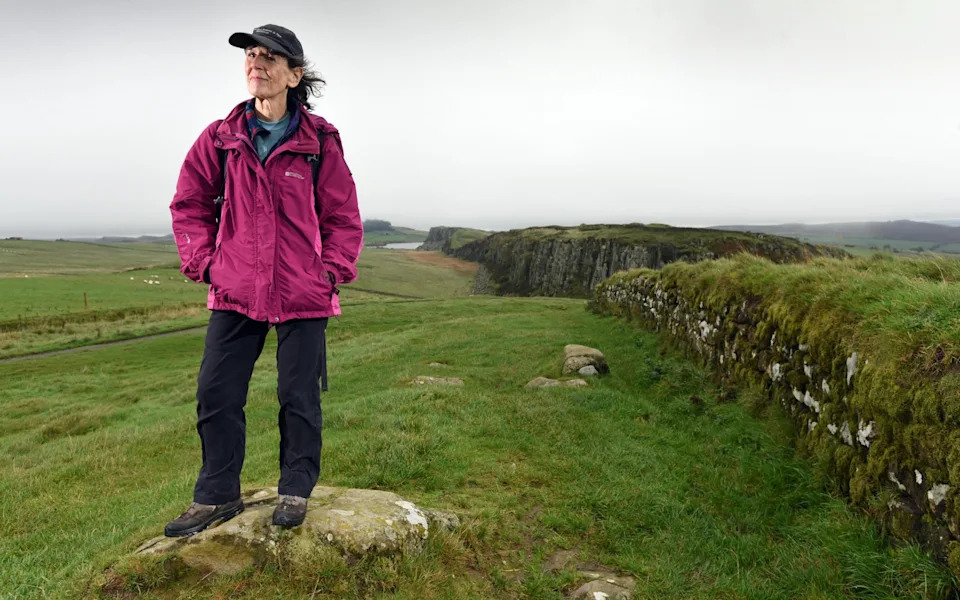 Helen Pickles, Telegraph Travel’s Northumberland expert - Asadour Guzelian
Helen Pickles, Telegraph Travel’s Northumberland expert - Asadour GuzelianBroaden your horizons with award-winning British journalism. Try The Telegraph free for 1 month with unlimited access to our award-winning website, exclusive app, money-saving offers and more.

